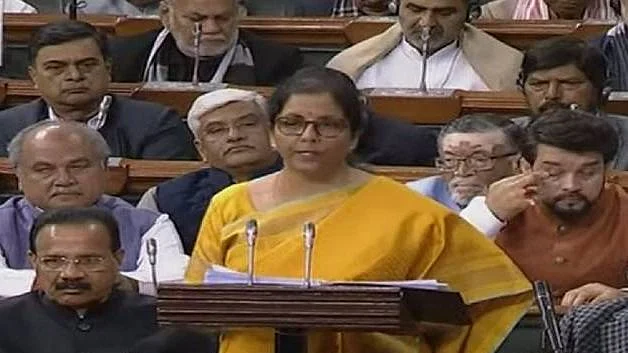Markets tank after presentation of Budget; nation may be headed for ratings downgrade
The Budget turned out to be a non-event as if failed to address the biggest concerns facing the country today: growing unemployment, slowing consumption and rising prices

Union Finance Minister Nirmala Sitharaman’s first full Budget led to a bloodbath on the markets as the BSE dropped 987 points, with the markets evidently giving a clear thumbs down to the proposals put forward by her. The feeling on the street now is that this budget will spell more trouble for the economy.
The fiscal math of the Budget now hinges on its ability to sell family silver and assets worth Rs 2.1 lakh crore. The fiscal deficit target could be breached massively if the government is unable to meet the target. In short, we are headed for serious trouble.
The Budget itself turned out to be a non-event as if failed to address the biggest concerns facing the country today: growing unemployment, slowing consumption and rising prices. The government continues to live in denial and is floating by hope. Hope might be great thing, but does it make sustainable fiscal policy?
The muddle over Income Tax cuts would feed the headlines but this budget goes far deeper than that. Before you count the pennies you may save because of the IT rate changes, please consider that your job may well be at stake. While the nation wraps its head around the new income tax slabs, the full impact of the Budget would be known only after the fine print is studied, in detail, over the next few days.
The Budget raises serious concerns about the future as we could be headed for a ratings downgrade since the government has abandoned its fiscal consolidation glidepath. Worse, nothing in the Budget indicates that the economy would help people keep their jobs, forget creation of new jobs.
The fiscal mess created by the government in 2019-20 is expected to continue into this year as the government has kept the fiscal deficit targets at 3.5%, 0.2% higher than the target for 2019-20. The gap between revenue and expenditure is estimated to be close to Rs 8 lakh crore and this too could lead to massive spending cuts towards the end of the next fiscal, like the cut we are presently seeing in the economy.
The really big question is how does the government plan to finance its Budget and how much does it plan through disinvestment? The total disinvestment target for the year is expected to be double of the target of 2019-20. The government had targeted Rs 1.05 lakh crore and according to media reports in late January, the government was struggling to get past the Rs 20,000 crore mark.
With two months to go in the current financial year, the government is going to struggle to keep the deficit at 3.8%, as announced in the Budget, even if we don’t factor in the off-books borrowing.
This is expected to lead to serious trouble for the ratings and Moodys indicated that the revenue collection target was too stiff and the government may not be able to achieve it. It means the debt on the country would increase significantly unless the government decides to cut down on expenditure.
"India’s general government debt is already significantly higher than the average for Baa-rated sovereigns – a product of persistent fiscal deficits. While India’s new budget calls for a modest narrowing of the deficit to 3.5% in the fiscal year 2020/21 from 3.8% in the fiscal year 2019/20, sustained weaker growth and tax cuts would make gross revenue targets difficult to achieve," a Moodys executive was quoted as saying.
The true impact of the Budget would be felt when the markets open on Monday as the markets had just about two hours to understand the implications of what the government has put out. The big question is, would we see some sunshine on Monday?
Follow us on: Facebook, Twitter, Google News, Instagram
Join our official telegram channel (@nationalherald) and stay updated with the latest headlines
